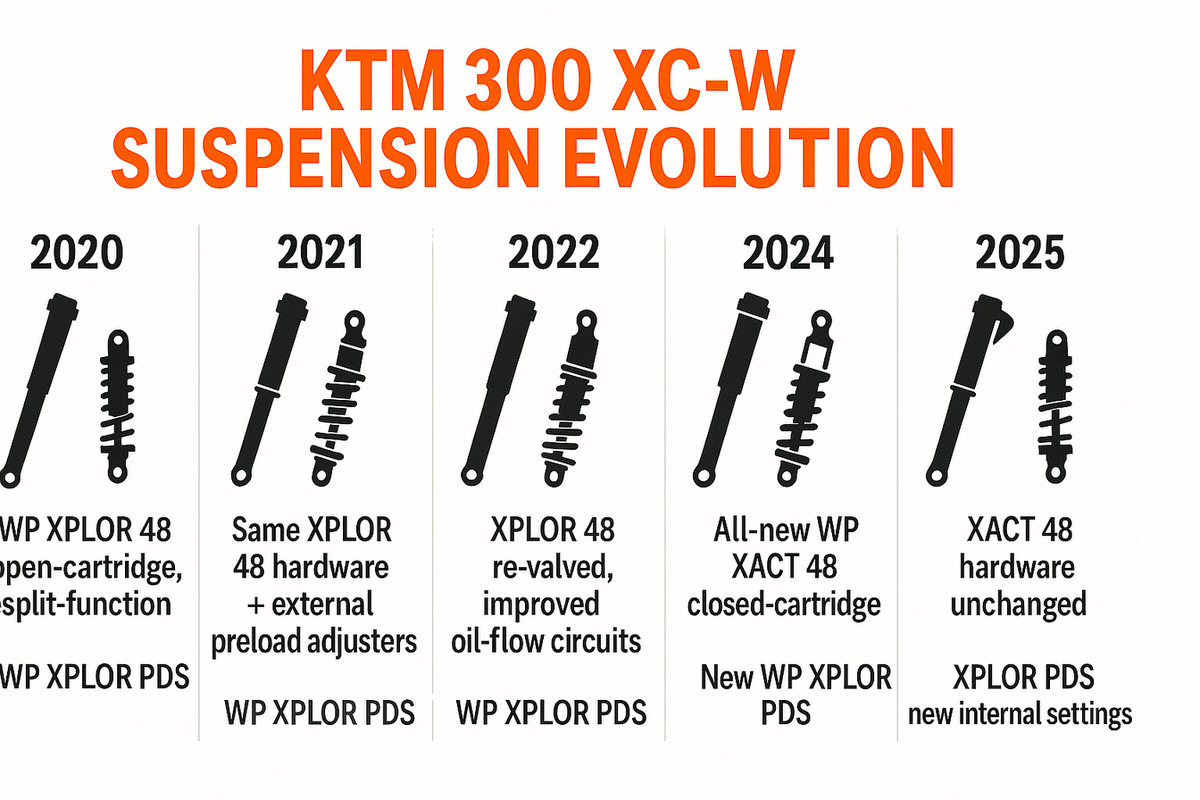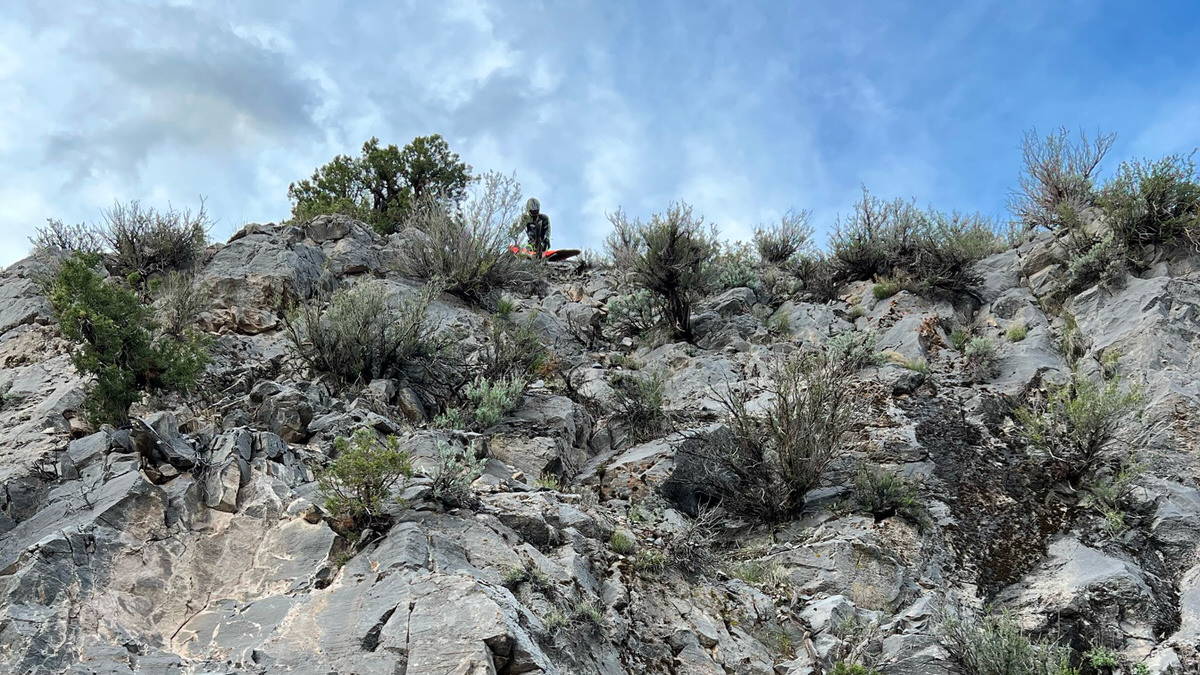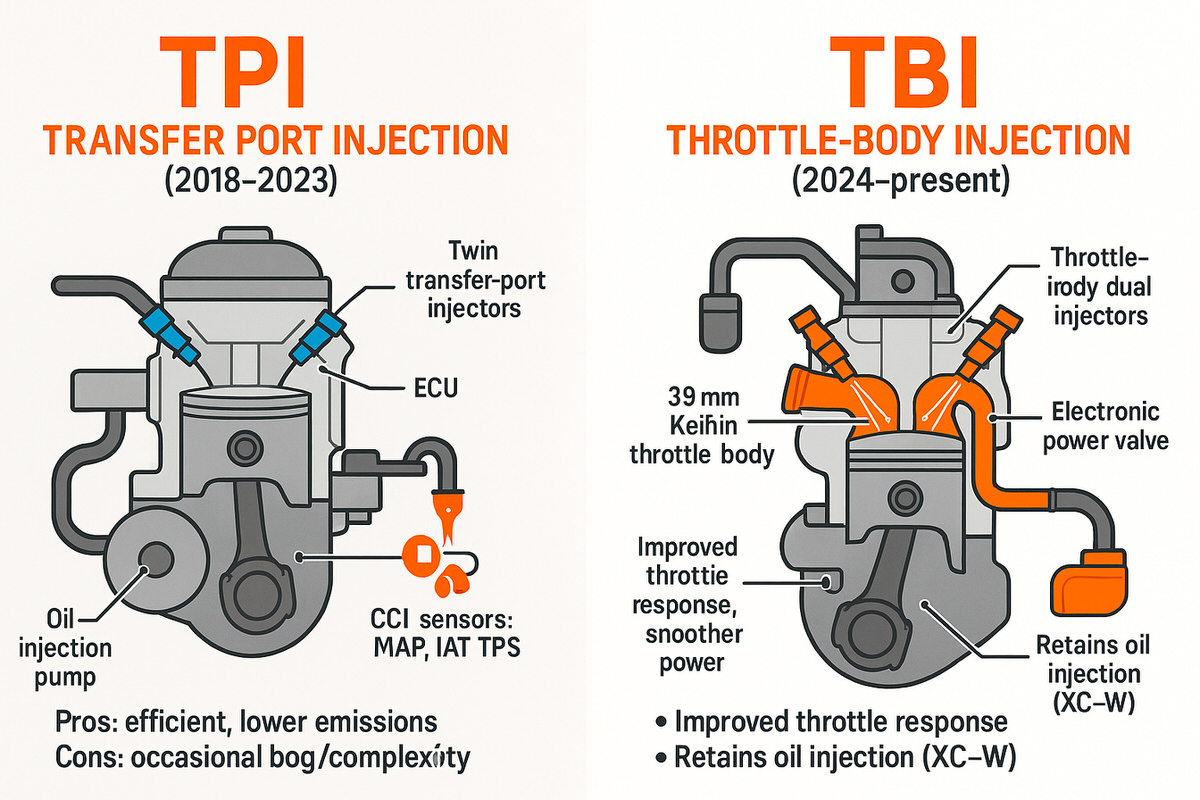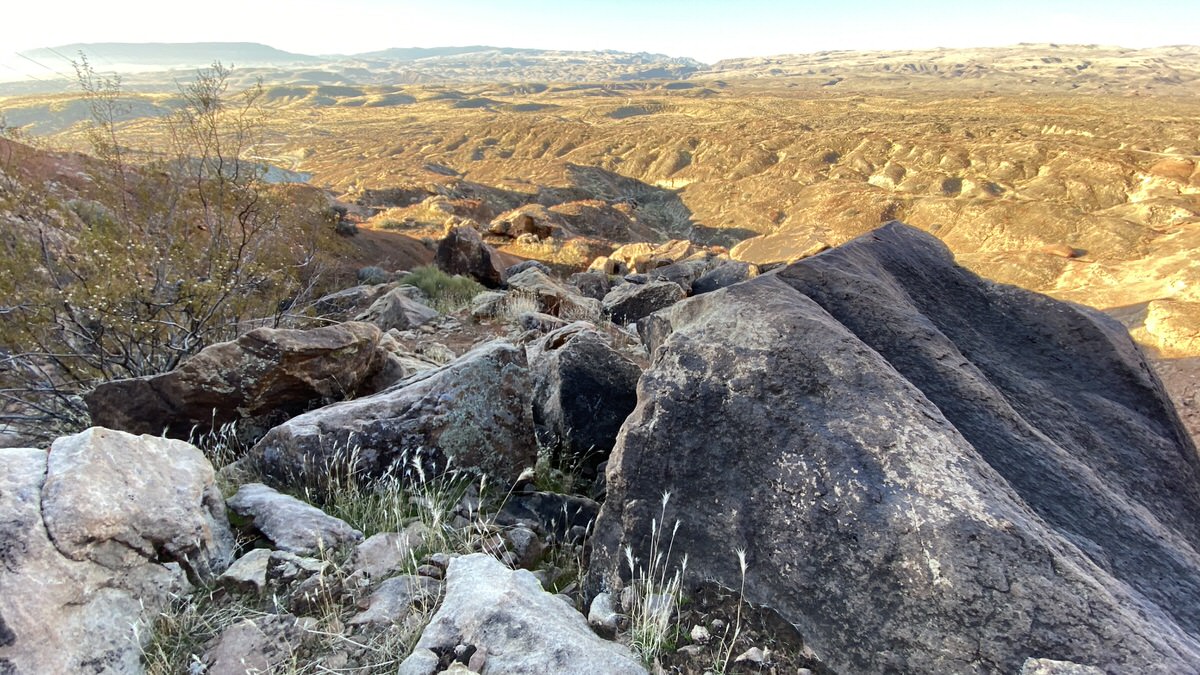Suspension Setup for Rocky Terrain: The Utah Dialing Guide
Rocky terrain demands specific suspension settings. This comprehensive guide breaks down exactly how to set up your WP XACT or XPLOR suspension for Utah's punishing rocks.

After 15 years of dialing suspension for Utah’s rocky terrain, one truth remains: the difference between fighting your bike and flowing over rocks is proper suspension setup. This guide distills thousands of hours of testing into actionable settings you can apply today.
The Rocky Terrain Challenge
Why Rocks Are Different
Rocky terrain presents unique suspension challenges:
- Square-edge hits: Instantaneous force spikes
- Deflection: Front wheel bouncing off line
- Traction loss: Suspension can’t follow terrain
- Rider fatigue: Fighting stiff suspension
- Inconsistent feedback: Can’t predict bike behavior
Standard suspension settings optimized for flow trails or sand will punish you on rocks. Here’s how to transform your bike’s capability.
Foundation: Spring Rate Selection
The Most Critical Decision
Before touching clickers, spring rate must be correct. Wrong springs = impossible to dial.
Spring Rate Quick Reference (WP XACT):
| Rider Weight | Fork Spring | Shock Spring | Notes |
|---|---|---|---|
| 140-160 lbs | 4.2 N/mm | 42-45 N/mm | Light riders need precision |
| 160-180 lbs | 4.4 N/mm | 45-48 N/mm | Most common range |
| 180-200 lbs | 4.6 N/mm | 48-52 N/mm | Standard “big guy” setup |
| 200-220 lbs | 4.8 N/mm | 52-54 N/mm | Consider custom valving |
| 220+ lbs | 5.0 N/mm | 54-57 N/mm | Definitely need revalve |
Rocky Terrain Adjustment: Go one rate stiffer than sand/flow recommendations. Rocks require more support.
Setting Sag: The Rocky Reality
Traditional sag numbers don’t apply to technical terrain:
Target Sag for Rocks:
- Static sag: 100-105mm (not 105-110mm)
- Race sag: 95-100mm (measured with gear)
- Free sag: 30-35mm (critical indicator)
Why Less Sag?
- More available travel for big hits
- Better platform for technical moves
- Reduced dive under braking
- Improved front/rear balance
KTM 300 XC-W Suspension Evolution: Know Your Hardware
Understanding which suspension generation you’re working with is crucial for proper setup. The last 5 years have seen significant changes:
2020-2023 (XPLOR Era): Open-cartridge fork gradually refined—first with preload adjusters, then firmer valving.
2024-2025 (XACT Era): Closed-cartridge fork, tool-free clickers, and a redesigned shock. 2025 tweaks the shock’s internals but leaves hardware intact.
Complete Evolution Table
| Model Year | Front Fork | Rear Shock | What Changed vs. Previous Year |
|---|---|---|---|
| 2020 | WP XPLOR 48 mm open-cartridge, split-function • New calibrated mid-valve piston • New fork caps & adjusters |
WP XPLOR PDS with second damping piston & reshaped sealing cup | Entire chassis/suspension overhauled for the new generation; more bottom-out resistance and higher ride height |
| 2021 | Same XPLOR 48 hardware + external preload adjusters on both fork legs | PDS shock carries over | Riders can set sag without tools; no internal valving change |
| 2022 | XPLOR 48 re-valved (firmer high-speed damping) and improved oil-flow circuits | Shock re-shimmed for a “sportier, more consistent feel” | Suspension feels more planted and resists fade on long stints |
| 2023 | XPLOR 48 continues, fully adjustable | PDS still standard | Only minor setting refinements; hardware unchanged |
| 2024 | All-new WP XACT 48 closed-cartridge spring fork • New mid-valve & 68 mm hydro-stop • Tool-free clickers (top & bottom) |
New shorter WP XPLOR PDS shock with hand-adjustable high- & low-speed compression and rebound | Biggest leap since 2020: new frame geometry, lighter shock (-380 g) and full tool-free adjustability |
| 2025 | XACT 48 hardware unchanged | XPLOR PDS gets new internal settings for better pressure balance and reduced cavitation | Refinement year—focus on plushness and durability, plus revised chain-guide hardware |
What This Means for Your Setup
XPLOR Era (2020-2023):
- Open-cartridge design more sensitive to oil level changes
- Requires more frequent service intervals in rocky terrain
- Limited adjustment range compared to XACT
- Works best with aftermarket preload adjusters (if pre-2021)
XACT Era (2024+):
- Closed-cartridge maintains consistency longer
- Tool-free adjustments allow trailside tuning
- Wider effective adjustment range
- Better suited to extreme rocky terrain out of the box
Fork Setup: Making It Work
WP XACT 48 Settings
Baseline Rocky Terrain Settings:
- Compression: 10-12 clicks from closed
- Rebound: 14-16 clicks from closed
- Air chamber: 130-140mm (10mm less than standard)
- Oil level: 290cc per leg (+10cc)
- Fork height: 5mm above clamp
Understanding Compression
The Rocky Paradox: You need LESS compression for rocks, not more.
Why? Suspension must react instantly to square edges. Too much compression = deflection.
Progressive Adjustment:
- Start at 15 clicks out
- Find rocky test section
- Reduce 2 clicks at a time
- Stop when control degrades
Signs of Too Little Compression:
- Diving excessively on braking
- Wallowing in corners
- Using full travel constantly
Signs of Too Much Compression:
- Deflecting off rocks
- Arms pumping quickly
- Harsh feel over small bumps
Rebound: The Forgotten Setting
Rebound controls how fast fork extends after compression. Critical for rocks.
Fast Rebound (More Clicks Out):
- Better for successive hits
- Prevents packing down
- Maintains ride height
Slow Rebound (Fewer Clicks Out):
- More control on big hits
- Reduces “pogo” effect
- Better for isolated obstacles
Rocky Terrain Sweet Spot: 14-16 clicks provides best compromise.
Shock Setup: The Power Center
WP XACT Shock Specifics
Baseline Rocky Settings:
- High-speed compression: 1.5-1.75 turns out
- Low-speed compression: 14-16 clicks out
- Rebound: 14-16 clicks out
- Preload: 5-7mm
High-Speed vs Low-Speed
Understanding the difference transforms your setup:
High-Speed Compression:
- Controls big hits, g-outs
- Prevents bottoming
- 1/4 turn = major change
Low-Speed Compression:
- Body movement, brake dive
- Platform feel
- 2-3 clicks = noticeable
Rocky Reality: Open HS more than you think. Rocks create high shaft speeds.
PDS vs Linkage Differences
PDS (KTM XC-W) Characteristics:
- More progressive naturally
- Needs slower rebound
- Better for technical
- Less adjustment range
Linkage (Husqvarna TE) Benefits:
- More linear feel
- Wider adjustment range
- Better for mixed terrain
- Easier to tune
Setup Differences:
- PDS: Run 2-3 clicks slower rebound
- Linkage: Can run faster rebound
- PDS: Less preload needed
- Linkage: More preload acceptable
Location-Specific Settings
American Fork Canyon Setup
Terrain: Embedded rocks, roots, technical climbs
Fork:
- Compression: 10-11 clicks
- Rebound: 15-16 clicks
- Oil level: +15cc from stock
Shock:
- HS Comp: 1.75 turns out
- LS Comp: 15-16 clicks
- Rebound: 14-15 clicks
Why: Maximum compliance for constant rock impacts.
San Rafael Swell Setup
Terrain: Ledges, loose rocks, big hits
Fork:
- Compression: 12-14 clicks
- Rebound: 13-14 clicks (faster)
- Air chamber: 135mm
Shock:
- HS Comp: 1.25 turns out (firmer)
- LS Comp: 12-13 clicks
- Rebound: 15-16 clicks
Why: More support for G-outs, faster rebound for successive hits.
Moab Slickrock Setup
Terrain: Traction-dependent, steep angles
Fork:
- Compression: 13-14 clicks
- Rebound: 16-18 clicks (slower)
- Standard oil level
Shock:
- HS Comp: 1.5 turns (standard)
- LS Comp: 12-14 clicks
- Rebound: 16-18 clicks (slower)
Why: Slower rebound maintains traction on steep slickrock.
Advanced Tuning Techniques
Oil Level Magic
Fork oil level fine-tunes bottom resistance:
Stock: 280cc per leg Rocky +10cc: 290cc - more bottom resistance Rocky +20cc: 300cc - significant change
How to Adjust:
- Remove fork caps (bike secure)
- Compress fork fully
- Measure from top of tube
- Add/remove oil as needed
Air Chamber Tuning
Affects progression curve:
Larger Chamber (150-160mm):
- More linear feel
- Less bottom resistance
- Better small bump
Smaller Chamber (130-140mm):
- More progressive
- Better bottom resistance
- Sacrifices initial comfort
The Bleed Trick
Bleeding excess pressure improves compliance:
- Compress fork/shock fully
- Crack bleed screw briefly
- Release compression
- Repeat 2-3 times
Removes pressure build-up, improves action.
Common Problems and Solutions
Problem: Harsh Over Small Rocks
Diagnosis: Too much compression, wrong oil weight
Solution:
- Reduce compression 3-4 clicks
- Check oil level (may be too high)
- Ensure correct spring rate
- Consider lighter oil weight
Problem: Deflecting Off Rocks
Diagnosis: Over-damped, too stiff
Solution:
- Open compression significantly
- Speed up rebound 2 clicks
- Lower tire pressure 1-2 PSI
- Check rider position
Problem: Using Full Travel Constantly
Diagnosis: Under-sprung or under-damped
Solution:
- Increase spring rate
- Add high-speed compression
- Check sag (may be excessive)
- Add oil for bottom resistance
Problem: Arm Pump
Diagnosis: Fighting suspension, poor setup
Solution:
- Reduce overall compression
- Check bar position
- Relax grip (seriously)
- Consider softer springs
Testing Protocol
The Right Way to Test
Step 1: Find Representative Terrain
- Mix of rock sizes
- Some speed sections
- Technical challenges
- Consistent loop
Step 2: Baseline Run
- Note specific problems
- Mark harsh sections
- Time the loop
- Note fatigue points
Step 3: Make ONE Change
- Adjust 2-3 clicks only
- Front OR rear, not both
- Write down change
- Retest immediately
Step 4: Evaluate Honestly
- Better or worse?
- New problems created?
- Overall improvement?
- Fatigue difference?
Step 5: Refine
- Chase improvement direction
- Don’t over-adjust
- Know when to stop
- Document final settings
Maintenance for Rocky Terrain
Increased Wear Reality
Rocks accelerate suspension wear:
Service Intervals:
- Fork: Every 30-40 hours (not 50)
- Shock: Every 40-50 hours (not 100)
- Linkage: Every 20 hours
- Air filter: Every ride
Critical Inspection Points:
- Fork seal condition
- Shock shaft wear
- Linkage bearing play
- Spring condition
DIY Maintenance
After Every Rocky Ride:
- Clean fork stanchions thoroughly
- Check for oil weepage
- Cycle suspension feeling for notches
- Inspect dust wipers
Weekly:
- Check sag (springs settle)
- Verify clicker positions
- Clean and lube linkage
- Check mounting bolts
The Mental Component
Trust Your Setup
Confidence in suspension = faster riding. Period.
Building Trust:
- Make changes gradually
- Test thoroughly
- Commit to settings
- Stop second-guessing
When to Get Help
Consider Professional Help When:
- Stock settings aren’t close
- You’ve tried everything
- Bike feels dangerous
- Considering revalve
What Shops Provide:
- Custom valving
- Spring rate expertise
- Problem diagnosis
- Rider-specific setup
Final Wisdom
After years of testing, these truths emerge:
- Softer is usually faster on rocks
- Spring rate matters more than clickers
- Oil level changes are free horsepower
- Trust feel over numbers
- Every rider needs different settings
The “perfect” setup is the one that lets you ride without thinking about suspension. When you stop fighting your bike and start flowing over rocks, you’ve found it.
Ready to dial your suspension for Utah’s rocks? Our suspension service includes custom setup for your weight, speed, and favorite trails.
What suspension challenges do you face on rocky terrain? Share your setup discoveries below.
About Mountain Goat Sports
Professional motorcycle repair & suspension tuning for Utah hard enduro riders. Specializing in KTM, Husqvarna, and GasGas dirt bikes.
Related Articles

Red Trail Guide: San Rafael Swell's Technical Challenge
The Red Trail in the San Rafael Swell delivers one of Utah’s most rewarding technical single track experiences. This ...

The Ultimate Guide to Utah Hard Enduro Riding
Utah offers some of North America's most challenging hard enduro terrain. This comprehensive guide covers everything ...

TBI vs TPI Explained: KTM's Fuel Injection Systems Decoded
KTM's shift from TPI to TBI has riders confused. This technical deep-dive explains both fuel injection systems, their...

Winter Riding in Warner Valley: Utah's Desert Escape
When northern Utah's trails are buried under snow, Warner Valley offers perfect riding conditions with 60-degree temp...
Need Service for Your Bike?
Our expert technicians are ready to help with all your motorcycle needs. From suspension tuning to engine rebuilds, we've got you covered.